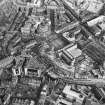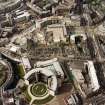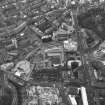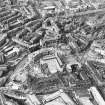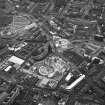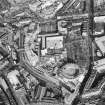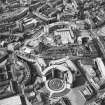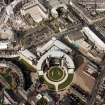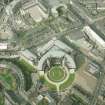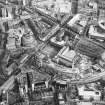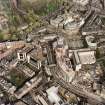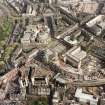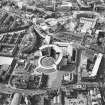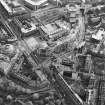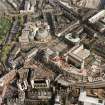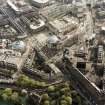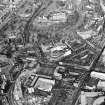Following the launch of trove.scot in February 2025 we are now planning the retiral of some of our webservices. Canmore will be switched off on 24th June 2025. Information about the closure can be found on the HES website: Retiral of HES web services | Historic Environment Scotland
Edinburgh, The Exchange, Lothian Road, 1 Festival Square, Sheraton Grand Hotel And Spa
Hotel (Period Unassigned)
Site Name Edinburgh, The Exchange, Lothian Road, 1 Festival Square, Sheraton Grand Hotel And Spa
Classification Hotel (Period Unassigned)
Alternative Name(s) One-spa
Canmore ID 250353
Site Number NT27SW 4069
NGR NT 24679 73328
Datum OSGB36 - NGR
Permalink http://canmore.org.uk/site/250353
- Council Edinburgh, City Of
- Parish Edinburgh (Edinburgh, City Of)
- Former Region Lothian
- Former District City Of Edinburgh
- Former County Midlothian
NT27SW 4069.00 Sheraton Grand Hotel and Spa
NT27SW 4069.01 One-Spa
Project (1997)
The Public Monuments and Sculpture Association (http://www.pmsa.org.uk/) set up a National Recording Project in 1997 with the aim of making a survey of public monuments and sculpture in Britain ranging from medieval monuments to the most contemporary works. Information from the Edinburgh project was added to the RCAHMS database in October 2010 and again in 2012.
The PMSA (Public Monuments and Sculpture Association) Edinburgh Sculpture Project has been supported by Eastern Photocolour, Edinburgh College of Art, the Edinburgh World Heritage Trust, Historic Scotland, the Hope Scott Trust, The Old Edinburgh Club, the Pilgrim Trust, the RCAHMS, and the Scottish Archive Network.
Field Visit (20 May 2009)
A large hemisphere, covered with metal discs, spouts water from a grilled open strip dividing the dome in two vertically. This is surrounded by thirteen differently carved and sized balls, assorted small rocks and a rough piece of white quartz (?) which is the source of another fountain of water. All are contained within a large, walled rectangular pool. The enclosure's side walls slope up parallel to the hotel steps, so that the back wall is very high, restricting access from behind. (These walls are not part of the sculpture, but pre-existed). Three different sizes of limestone balls, one stippled rather than carved, sit on the low front wall. A small carved ball is placed on the ramped wall by the hotel steps. Five balls, including the largest, are scattered across the paved area in front of the fountain. Most of these balls have convex circles or knob-like forms carved into them; three are stippled and one is virtually plain. The number and sizes of the circles vary.
The concrete shell of the dome is constructed in triangular sections, separated by black rubber strips which radiate from each of the larger copper discs. In one section beside the steps, three coins are embedded with the steel (?) discs: an Irish penny, a ten pence piece and a fifty pence piece.
Artists were invited to submit proposals for a water feature when the square and pool frame were already complete. Remco de Fouw won the competition in the spring of 1999, and was officially commissioned in November 1999.
The artist was inspired by enigmatic carved neolithic stones seen in the Hunterian Museum in Glasgow ten years earlier. These stone balls could be geometric models, oracle stones, gaming pieces, tokens or currency, but their purpose remains a mystery. The carved balls appear to come from the larger 'ball' of the dome and can 'imply atoms, molecules, cells dividing' (1). According to the artist, 'within the context of the financial services district, it seemed appropriate to make reference to some of these ideas in an open-ended way. The hierarchical geometry suggests archetypes of division, evolution and multiplication.' (2)
Inscriptions : On bronze plaque at corner with steps to hotel (raised letters):
First Conundrum / Artist: Remco de Fouw / Ancient carved stones believed to have been formed during the / neolithic period have been found throughout Scotland. There are / many theories surrounding their possible origin and purpose. They / remain a uniquely Scottish mystery that continue to inspire thousands / of years later and have been the artist's inspiration for this artwork. / Commissioned by: / The City of Edinburgh Council Scottish Enterprise Edinburgh and Lothian
At the top right corner of the plaque (forming a square) are the letters E I / C C [Edinburgh International Conference Centre}
Signatures : None
Design period : 1999-2001
Year of unveiling : 2001
Information from Public Monuments and Sculpture Association (PMSA Work Ref : EDIN1520)















































